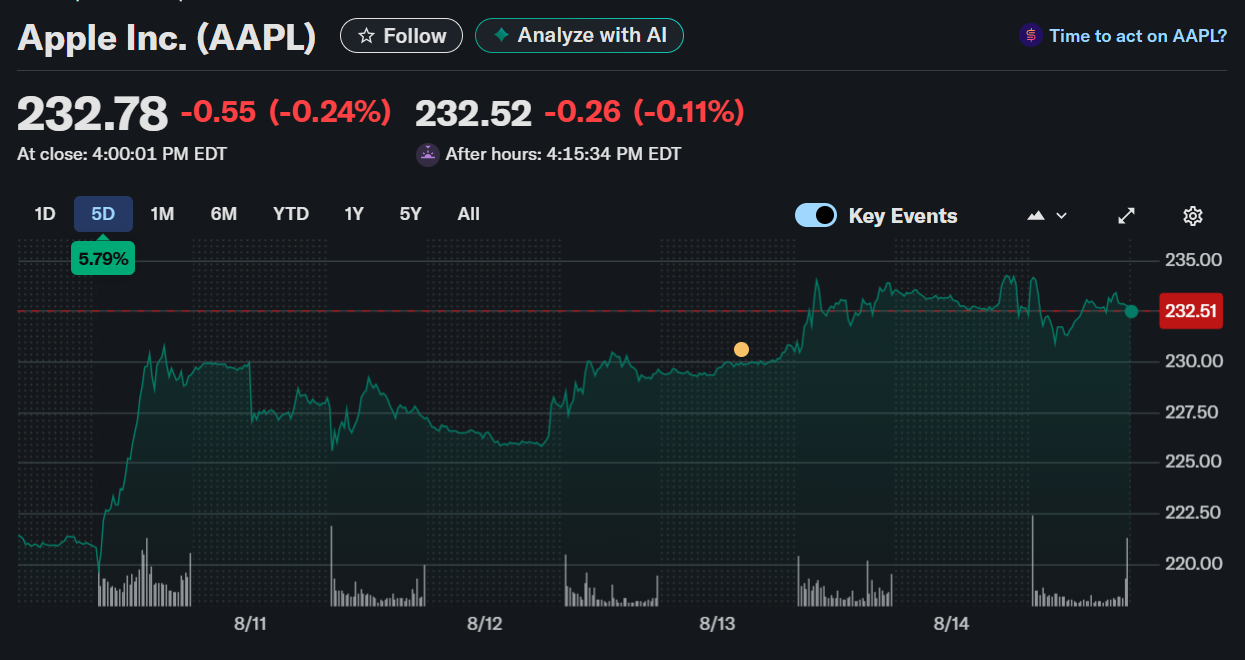TLDR
- Apple reintroduces blood oxygen monitoring to select Apple Watches via paired iPhone data processing.
- Update follows a U.S. Customs ruling allowing redesigned feature imports into the U.S.
- ITC had banned imports after ruling Apple infringed Masimo’s patents in 2023.
- Feature requires iOS 18.6.1 and watchOS 11.6.1; data now viewable in the Health app.
- AAPL shares show modest gains over five years despite underperformance vs S&P 500 recently.
Apple Inc. ($AAPL) stock was trading with a year-to-date return of -6.78% as of August 14, 2025, lagging behind the S&P 500’s 9.89%. On Thursday, Apple announced it is reviving its blood oxygen monitoring feature for certain Apple Watch models, including Series 9, Series 10, and Apple Watch Ultra 2.

The update sidesteps a U.S. International Trade Commission (ITC) import ban by shifting data processing to the user’s paired iPhone. Results will now appear in the Respiratory section of the Health app, instead of directly on the watch face.
Legal Battle with Masimo and the ITC Ban
The redesign stems from Apple’s ongoing legal dispute with medical technology firm Masimo. In 2023, the ITC ruled Apple had infringed Masimo’s pulse oximetry patents, leading to an import ban on affected Apple Watch models. Apple paused sales and began offering modified versions without the feature in the U.S.
The recent U.S. Customs ruling allows Apple to resume imports—provided the blood oxygen measurement process is handled differently. This change applies only to Apple Watches sold after the early 2024 ban took effect.
Software Requirements and Rollout
To access the restored functionality, users must update their iPhone to iOS 18.6.1 and their Apple Watch to watchOS 11.6.1. While older devices with the original feature remain unaffected, new U.S. models will rely entirely on iPhone-based computation for blood oxygen readings.
The company highlighted its commitment to health technology, citing privacy, scientific grounding, and user empowerment as core principles.
Apple’s Health Push Expands
This move builds on Apple’s broader healthcare ambitions. Recently, the company launched sleep apnea detection on the Apple Watch, hearing health features for AirPods, and its first major health study in five years.
Apple aims to position its devices as daily health companions, a strategy that could bolster long-term engagement with its ecosystem.
AAPL Performance
While AAPL has delivered a 108.12% return over the past five years, recent performance has trailed the S&P 500. One-year returns stand at 5.40% versus the index’s 18.48%, reflecting softer near-term growth momentum.
Apple’s ability to restore popular health features despite regulatory hurdles could aid its premium watch sales and help close that performance gap.






